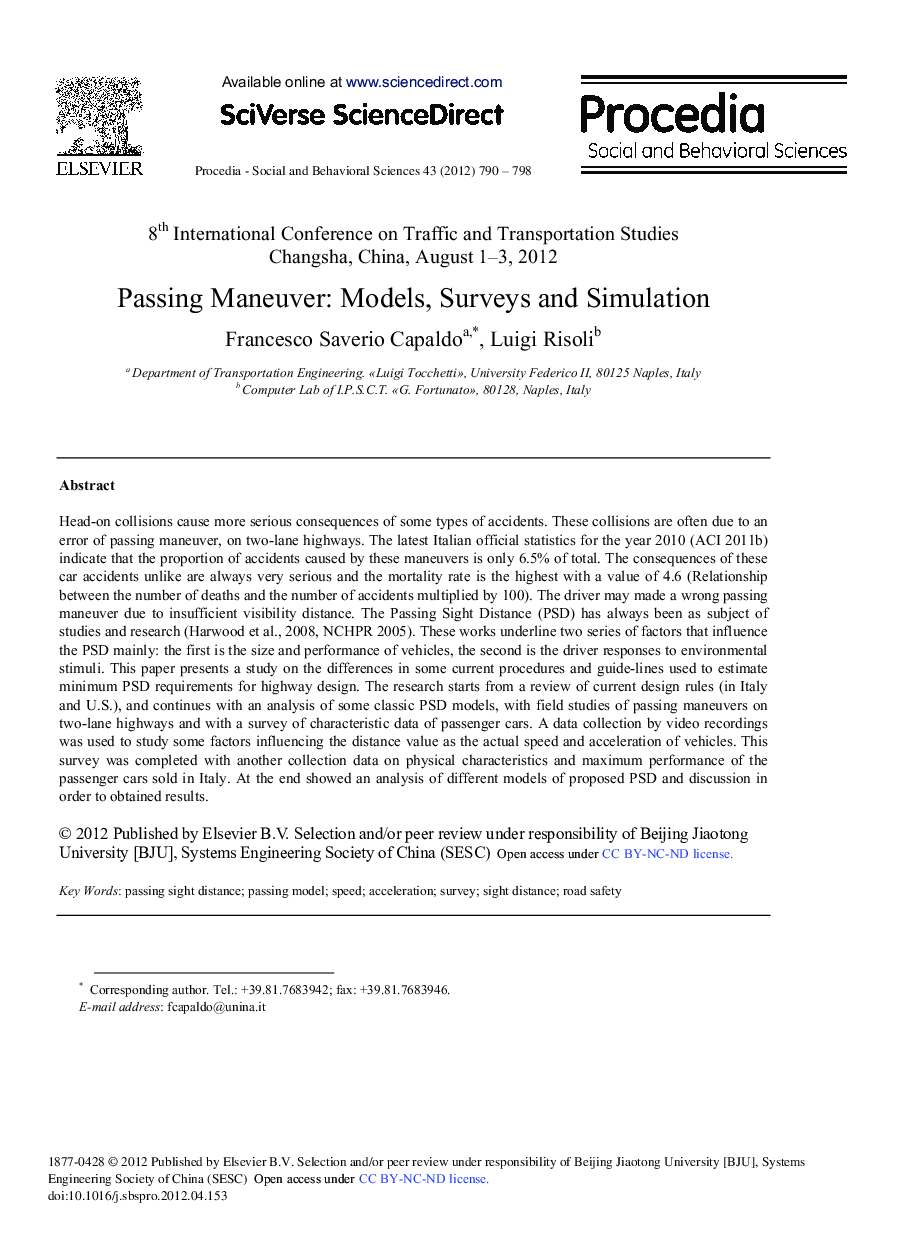| Article ID | Journal | Published Year | Pages | File Type |
|---|---|---|---|---|
| 1122162 | Procedia - Social and Behavioral Sciences | 2012 | 9 Pages |
Head-on collisions cause more serious consequences of some types of accidents. These collisions are often due to an error of passing maneuver, on two-lane highways. The latest Italian official statistics for the year 2010 (ACI, 2011b, ) indicate that the proportion of accidents caused by these maneuvers is only 6.5% of total. The consequences of these car accidents unlike are always very serious and the mortality rate is the highest with a value of 4.6 (Relationship between the number of deaths and the number of accidents multiplied by 100). The driver may made a wrong passing maneuver due to insufficient visibility distance. The Passing Sight Distance (PSD) has always been as subject of studies and research (Harwood et al., 2008, NCHPR 2005). These works underline two series of factors that influence the PSD mainly: the first is the size and performance of vehicles, the second is the driver responses to environmental stimuli. This paper presents a study on the differences in some current procedures and guide-lines used to estimate minimum PSD requirements for highway design. The research starts from a review of current design rules (in Italy and U.S.), and continues with an analysis of some classic PSD models, with field studies of passing maneuvers on two-lane highways and with a survey of characteristic data of passenger cars. A data collection by video recordings was used to study some factors influencing the distance value as the actual speed and acceleration of vehicles. This survey was completed with another collection data on physical characteristics and maximum performance of the passenger cars sold in Italy. At the end showed an analysis of different models of proposed PSD and discussion in order to obtained results.
